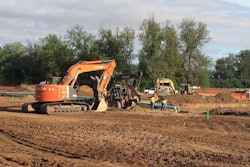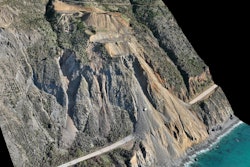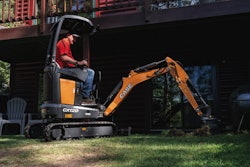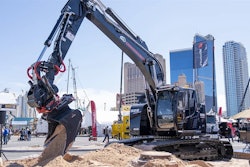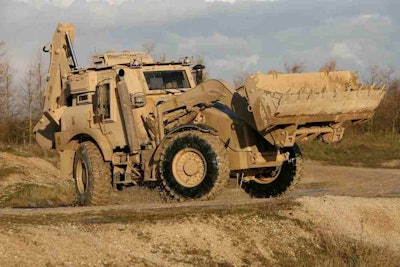
Ten years into a successful run of manufacturing a high-speed, armored backhoe for the U.S. Army, the machine’s impact is still being felt at JCB, and especially at the company’s North American headquarters in Savannah, Georgia.
In a recent report from the Savannah Morning News, JCB detailed how it won its initial $206 million contract—the largest order in the company’s history—to build the High Mobility Engineer Excavator, and told the paper more military projects are in the works.
RELATED >> PHOTOS: Inside and out JCB’s half truck, half backhoe HMEE Army machine
The HMEE, pronounced like the Hemi engine, is a 17.5-ton backhoe capable of reaching speeds up to 60 miles per hour. Powered by a 6.7-liter Cummins QSB engine, the machine can lift up to 2 tons and has a dig depth of 13 feet.
Thanks to its high-speed capabilities, the backhoe is able to travel inline with military convoys rather than requiring a tow. And troops use the machines to clear roads, remove obstacles and block the opposition’s routes—all with blast protection thanks to the machine’s armored plates.
The Army has been so pleased with the machine’s performance, it placed a second, $50 million order for more units last year. In response, JCB has moved its Government and Defense division from Great Britain to Savannah, according to the Morning News report.
It’s this 50 person team that has begun work in Savannah on at least three more military projects, the paper reports.
Since 2005, the Savannah plant has built nearly 1,000 HMEEs. JCB Chairman John Patterson the company began designing the HMEE when the Army released its specifications for a new machine in 2000.
“Interestingly enough, we had a backhoe loader—in fact, we are the No. 1 manufacturer of backhoe loaders in the world—and we had an agricultural tractor that had high-speed capability,” he said. “Between the two, we came very close to meeting the specifications, so we began to look at ways to combine those qualities into one machine.”

